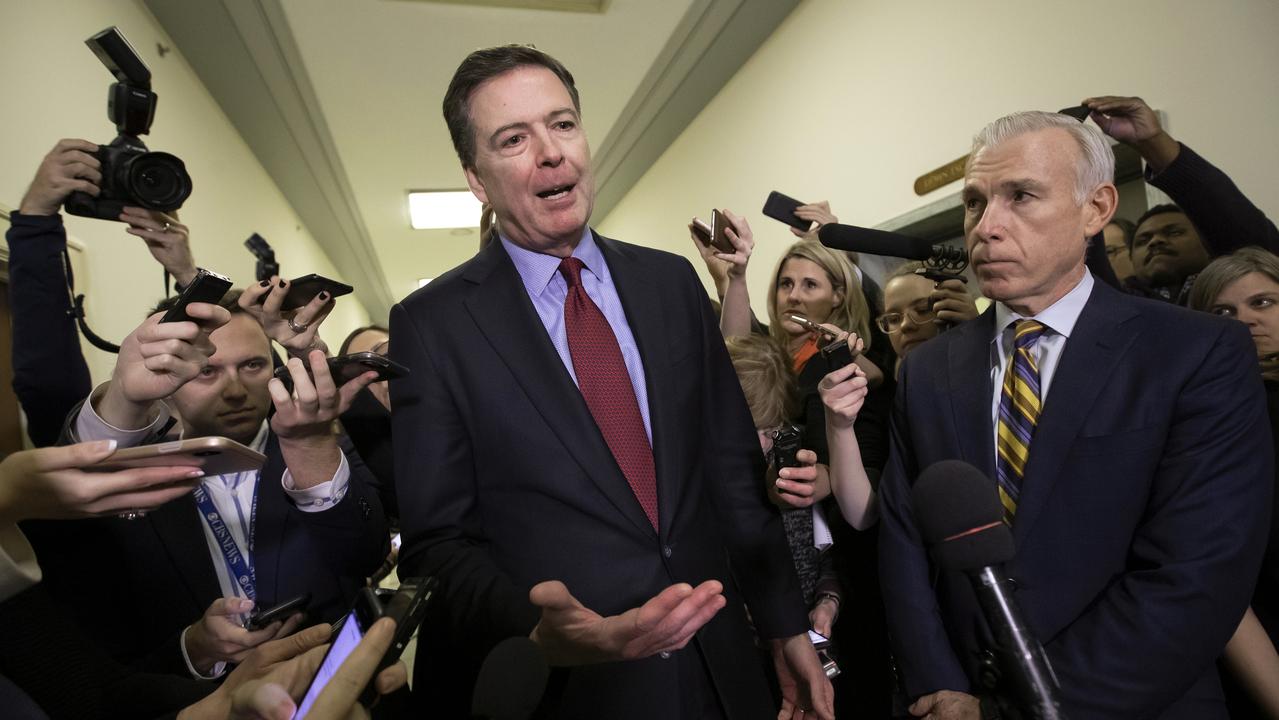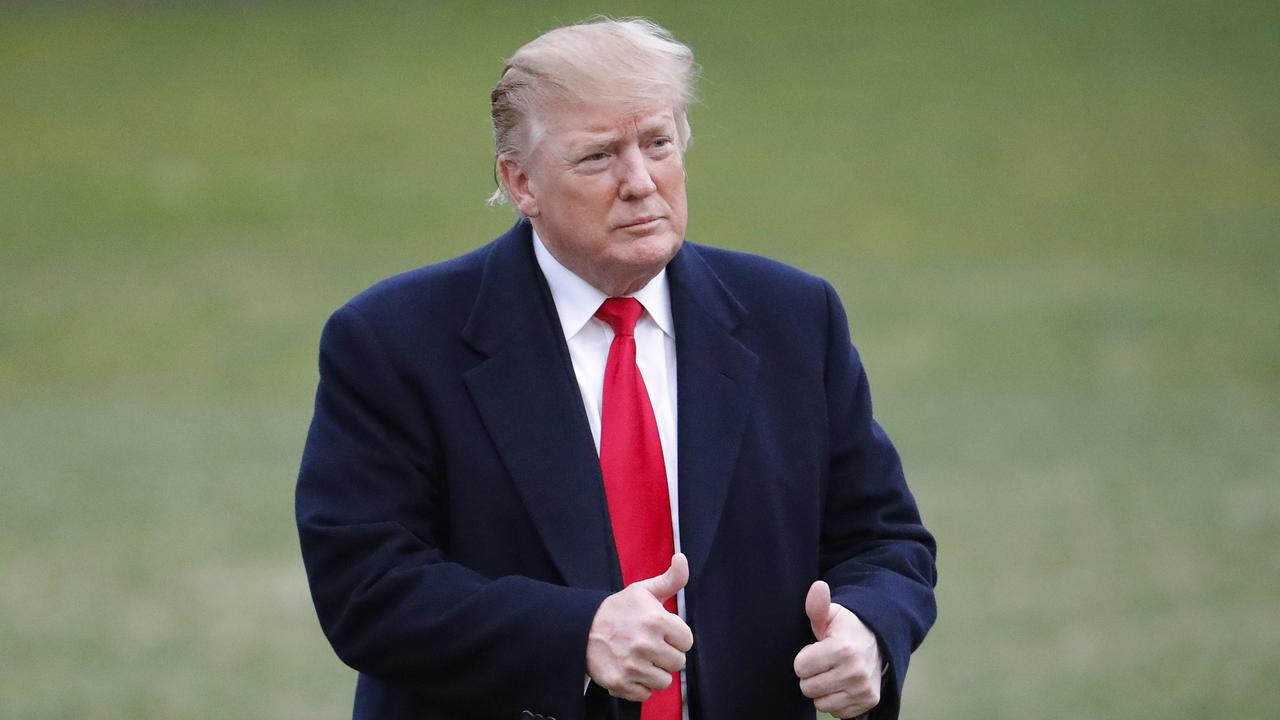
At the time of Donald Trump’s inauguration, Barack Obama warned the incoming President that North Korea was likely to be his first major international crisis. Obama probably didn’t expect the situation would slide out of control so quickly and dramatically.
The world is six to nine months away from a potential conflict on the Korean Peninsula that could see the first use of nuclear weapons since World War II.
Tens if not hundreds of thousands of people could be killed and the North Korean regime destroyed, along with much of South Korea and, quite possibly, Japan.
It’s unthinkable, but appalling things can happen. We all have grown used to idea that — putting the Middle East aside — mass slaughter in military conflict doesn’t happen any longer. That assumption is wrong.
In the face of this dire situation the most chilling assessment about the possibility of conflict came from US Republican senator Lindsey Graham. Speaking to the media, Graham said he had discussed the North Korean situation with Trump, whom he described as “deadly serious”. “I think he’s made a decision long ago, quite frankly, to try to negotiate the threat with North Korea. But if negotiations fail, he is willing to abandon strategic patience and use pre-emption. I think he’s there mentally. He has told me this.”
Addressing the threat a nuclear-armed intercontinental ballistic missile would present to US cities, Graham said: “We’re in a unique situation of homeland defence versus regional stability. You can’t give your allies a veto when it comes to defending the homeland.”
That last sentence should make a chill run down the collective spines of US allies in the Asia-Pacific region. Graham is no lightweight. He is a respected and sensible Republican, able to work well with Democrats in the Senate, a close friend of John McCain and a strong advocate of America’s active role in the world.
His comments expose a hard reality, which is that faced with a clear threat of Los Angeles, New York or Chicago coming under attack from North Korean nuclear missiles, any US president would act to avert that threat, even at the expense of the potential mass artillery bombardment of Seoul.
Kim Jong-un may have signed his own death warrant by developing missiles that have the range to hit the continental US. Had Kim contented himself with intermediate-range weapons that threatened Japan or South Korea, the US would not be driven by the same urgency to disarm the regime. If US cities are under threat, South Korean and Japanese concerns for their own safety won’t act as a break on American military planning to pre-empt the North.
I said that we are six to nine months away from a conflict because, given the stakes involved, the US will exhaust every means short of war to get the North to stop its missile and nuclear weapons development.
This is likely to be a false hope. The UN’s recently announced sanctions are tough, but not strong enough to compel Kim to compromise. The sanctions don’t prevent the North from importing oil, or exporting clothing to China, its biggest income earner, nor do they stop millions of North Korean workers sending remittances home from China. If anything, sanctions will push Kim to speed up the final stages of weapons testing because he sees his ultimate security in possessing a nuclear arsenal too large for the US to reliably destroy in a first strike.
Towards the end of this year or in 2018, Trump’s choice will be to launch a massive pre-emptive strike or lose the ability to ever do so. While there are many sensible and senior Americans who argue that the US can adapt to living with a nuclear-armed North Korea, there are others who argue that deterrence based on mutually assured destruction may not prove reliable with a rogue regime.
The challenges in mounting a successful pre-emptive strike are daunting. Let’s assume that the American intent would be to destroy as much of the North’s missile and nuclear infrastructure as possible. Kim has dispersed these activities to many sites across the country, including some very close to the Chinese border.
The US would need to co-ordinate ballistic missile, cruise missile and precision-guided bomb strikes against several dozen stationary targets, including some well protected in underground facilities.
It also would need to dominate North Korean airspace to loiter with bomber aircraft long enough to locate mobile missile launchers and to re-attack sites not destroyed the first time.
That would be the beginning of the operation. Working on the assumption that the North would retaliate with a missile and artillery bombardment of Seoul, the US would need to take out as many of these weapons as possible, for example by using weapons such as the Massive Ordnance Air Blast bomb — dubbed “the mother of all bombs” — dropped over a tunnel complex in Afghanistan a few months ago.
Those attacks would be unlikely to take out all of the North’s artillery. US and South Korean artillery-spotting radar would be able to identify further targets, but only after the North had fired rounds towards Seoul.
There would be a pressing need to destroy North Korean submarines and fast-attack vessels before they could disperse, potentially carrying nuclear devices.
Even if the American intention was to leave the North Korean leadership intact, the actions described above would require thousands of targets to be hit and would take several days. The US would need to deploy substantial air and maritime forces in South Korea and the Sea of Japan. Washington would have to persuade Beijing that this wasn’t about regime decapitation — China would get to keep its buffer state.
A key thing to watch will be if the US starts to move some of its 300,000 citizens out of South Korea. About 8000 Australians live in South Korea and we would look to the US to evacuate them. It’s time that the Department of Foreign Affairs and Trade changed its travel advisory for South Korea, which rather bizarrely tells visitors only to “exercise normal precautions”, whatever that means.
Beyond intelligence support there is no obvious role for Australia in the first few days of a conflict unless the US asked for us to prepare, say, an air component of Super Hornet aircraft equipped with the Growler electronic warfare system that could help shut down North Korea’s air defence.
Malcolm Turnbull is exactly right: there is no way Australia can avoid this fight. The smart thing to do would be to start talking to the Americans to help shape their plans. There is no point sleepwalking into the biggest military crisis since the Soviets deployed nuclear-armed missiles in Cuba in 1962. If there is anything Australia can do to avert a war, now is the time to thinking laterally.
I suggested in this newspaper a few weeks ago that we could try to open a line of negotiation with the regime. The chance of a positive outcome is slim but it’s surely worth a try.
Peter Jennings is executive director of the Australian Strategic Policy Institute.




To join the conversation, please log in. Don't have an account? Register
Join the conversation, you are commenting as Logout